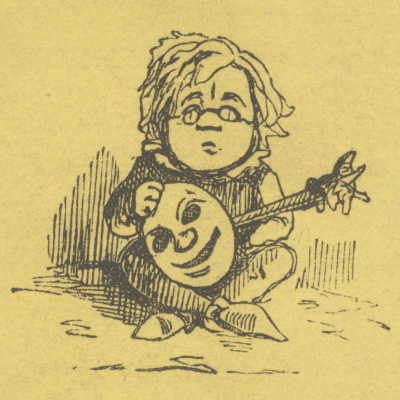In places where there are few schools– like Afghanistan or the Congo– schools represent progress, hope, and modernity. In places where there are lots of schools– like India– schools have come to represent congress, anxiety and irrelevance. Thus, the Indian school system is in trouble. The Australian school system is in trouble. The British school system is in trouble. The Japanese school system is in trouble. The German school system is in trouble. Even the Canadians— God’s Why-Can’t-You-Be-More-Like-Them kids— are worried about their school system. If the Canadians can’t get it right, there’s little hope for the rest of us.
Needless to say, the American school system is also a mess. I can write “needless to say” now, but I remember a time when this would’ve been news to me. Until I arrived in the States, I’d been under the impression that John Dewey had designed the American school to be along the lines of a Jihadist’s promised heaven. Though I’m more clued in, it was still astonishing to listen to Diane Ravitch, the former assistant secretary of Education, outline in a C-SPAN interview the sheer intractability of the problem.
Dr. Ravitch had the resigned calmness of a Xerxes who’s just turned his back on a pile of burning boats. Which is understandable, since she has done just that. Her radical turnaround from being a staunch proponent of No Child Left Behind to being a staunch opponent has attracted a great deal of controversy. After decades of a thumbs up position on making teachers legally accountable for student performance, standardized performance measures, introducing market-choice in school systems, and emphasis on science and mathematics, she’s flipped her thumb in the other direction.
And for a very good reason. She believes none of these solutions really solve the basic problem of modern education, namely: how and what to teach millions of students– differing widely in abilities, backgrounds and interests– what they need to know as adults? In fact she believes the proposed solutions, ranging from the Mastery Learning movement through CRL, OODM, COMP, PSI, STPSTR, ACiE, RSST, STM to No Child Left Behind (NCLB), have only made the problem that much more intractable. She doesn’t see any quick fixes either. As she wrote in a recent LA Times article:
There have been two features that regularly mark the history of U.S. public schools. Over the last century, our education system has been regularly captivated by a Big Idea — a savant or an organization that promised a simple solution to the problems of our schools. The second is that there are no simple solutions, no miracle cures to those problems.
She may be right. But even if there is no magic solution, perhaps there is a magic question. It’s familiar to computer scientists because it’s the heart and soul of the analysis of algorithms. The magic question is this: compared to what?
So TV is too violent. Compared to what? Der Struwwelpeter? So the world is getting worse. Compared to what? Venus? So the American school system is in terrible shape. Compared to what? The Congolese system? The French? The Indian? The Japanese? The Australian? The Canadian?
The answer, most likely, is that the American system is getting worse in comparison to some idealized notion of itself. Thus in 2008, 35% of the nation’s schools were labeled ‘failing schools’, where failure was judged according the NCLB criterion of showing steady increase in the percentage of students meeting competency standards in grades 3 through 8. NCLB has set a target of 100% by the year 2014; that is, by the year 2014, 100% of the students at a school, in grades 3 through 8, are expected to obtain 200 points or more in the NJ-ASK tests. As Dr. Ravitch remarks dryly in a WSJ article,
This was not my vision of good education.
To my mind, the difficulties with school education have always had a model– a ghastly but elegant reflection– in grammar instruction. The teaching of grammar has always been a source of grief, for educators as well for students. Kids enter school knowing how to talk, and they leave with the same general expertise, but in between they’re bludgeoned, coaxed, coerced, cajoled, and bombarded with attempts to teach them grammar. These attempts generally do no harm, and they generally do no good. The famous (notorious) conclusion of Braddock, Lloyd-Jones and Schoer in 1963 on grammar instruction, the result of a commissioned study by the National Council of Teachers of English, is brutally honest:
In view of the widespread agreement of research studies based upon many types of students and teachers, the conclusion can be stated in strong and unqualified terms: the teaching of formal grammar has a negligible or, because it usually displaces some instruction and practice in composition, even a harmful effect on improvement in writing.
Hence experts are coming around to the idea that as far as improving writing instruction is concerned, stuffing kids with more grammar is not the solution. As Rei Noguchi has so carefully discussed, a better strategy might be to teach them a minimal grammar specifically designed to aid in writing.
Ditto perhaps, for schools and education. As far as educating kids is concerned, perhaps less schooling, not more, might be the answer. Do we really need to treat kids like disposable flash drives? Do we really need to fill their heads with random crap like the periodic table, Snell’s law and twelve times seven? Do they really need to know what’s the latent point of ice? Does it really matter if they believe “deciduous” is what’s left behind after you’ve made a decision? Do we really need to burn some six hours per day per student for a period of some twelve years– 30,000 hours per life– to teach stuff they’ll need rarely, apply incompetently, and forget rapidly?
If we want students to be curious, independent, rational and decent human beings, then a good first step might be to find and encourage teachers who are those very things. And a good second step would be not to take the first one too seriously. There’s that scene in Fast Times At Ridgemont High where Jeff Spicoli, the stoned surfer kid, has pizza delivered in Mr. Hand’s class:
Mr. Hand: Am I hallucinating here? Just what in the hell do you think you’re doing?
Jeff Spicoli: Learning about Cuba, and having some food.
Spicoli may be an academic failure, the kind of kid NCLB is determined, blast them, not to leave behind. But for me, trapped as I was in a Dante-inspired hell-hole of an Indian school, Spicoli’s chutzpah, fearless attitude toward authority, self-sufficiency and awareness of the things that made him happy, represented the quintessence of what an American education was all about.
***
Acknowledgements:
Featured Image is from Todd Alexander Becker @ Deviant Art.



